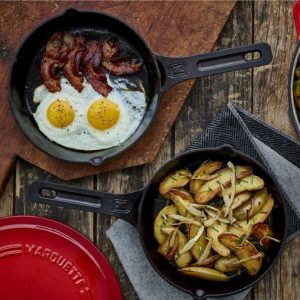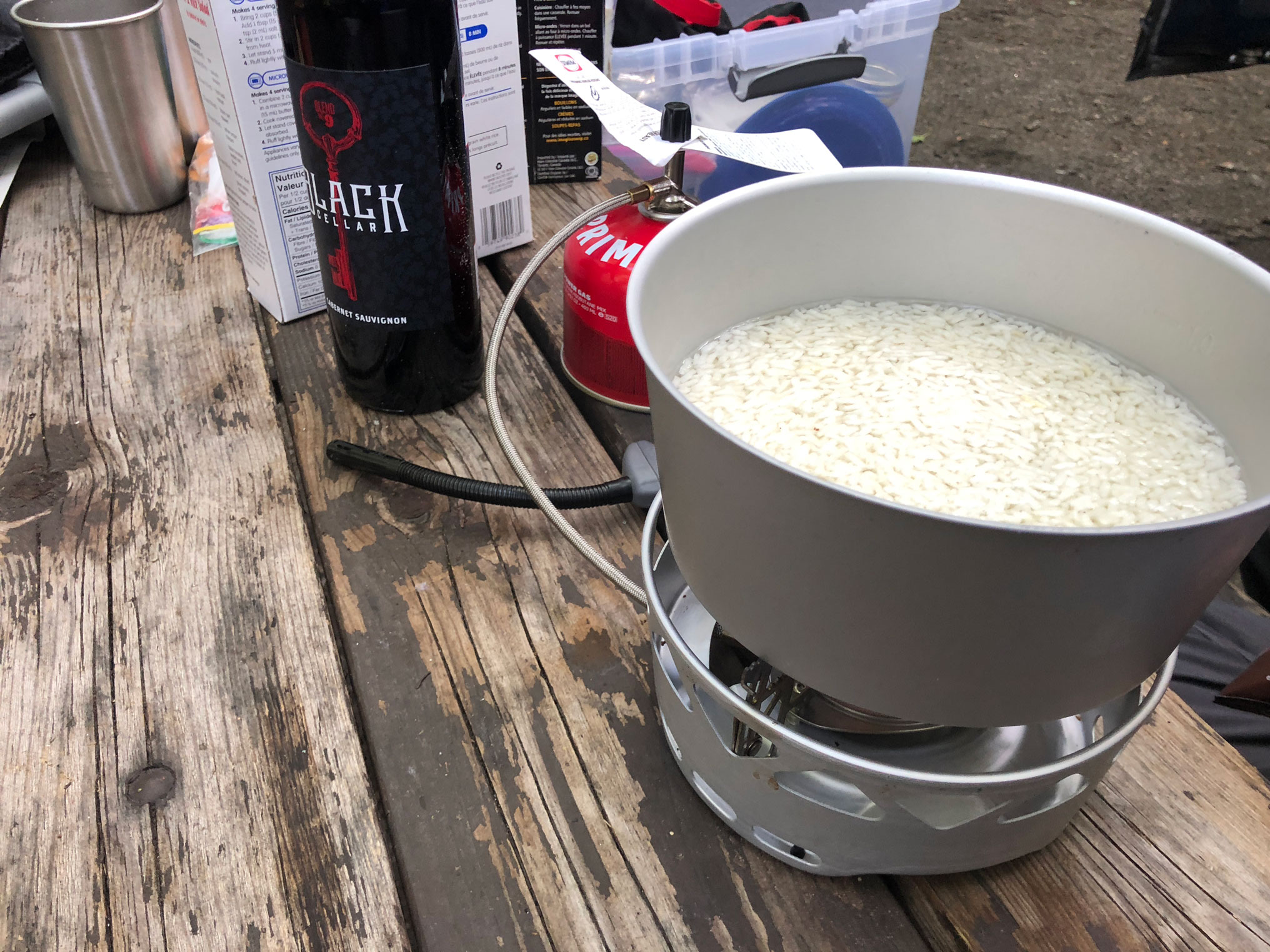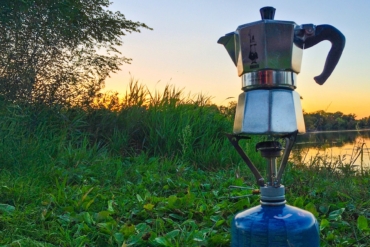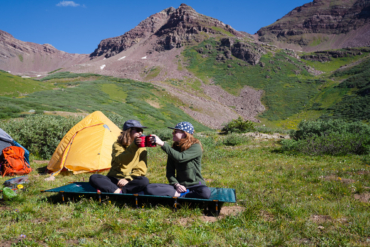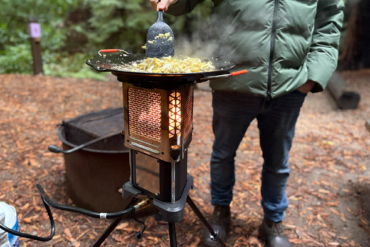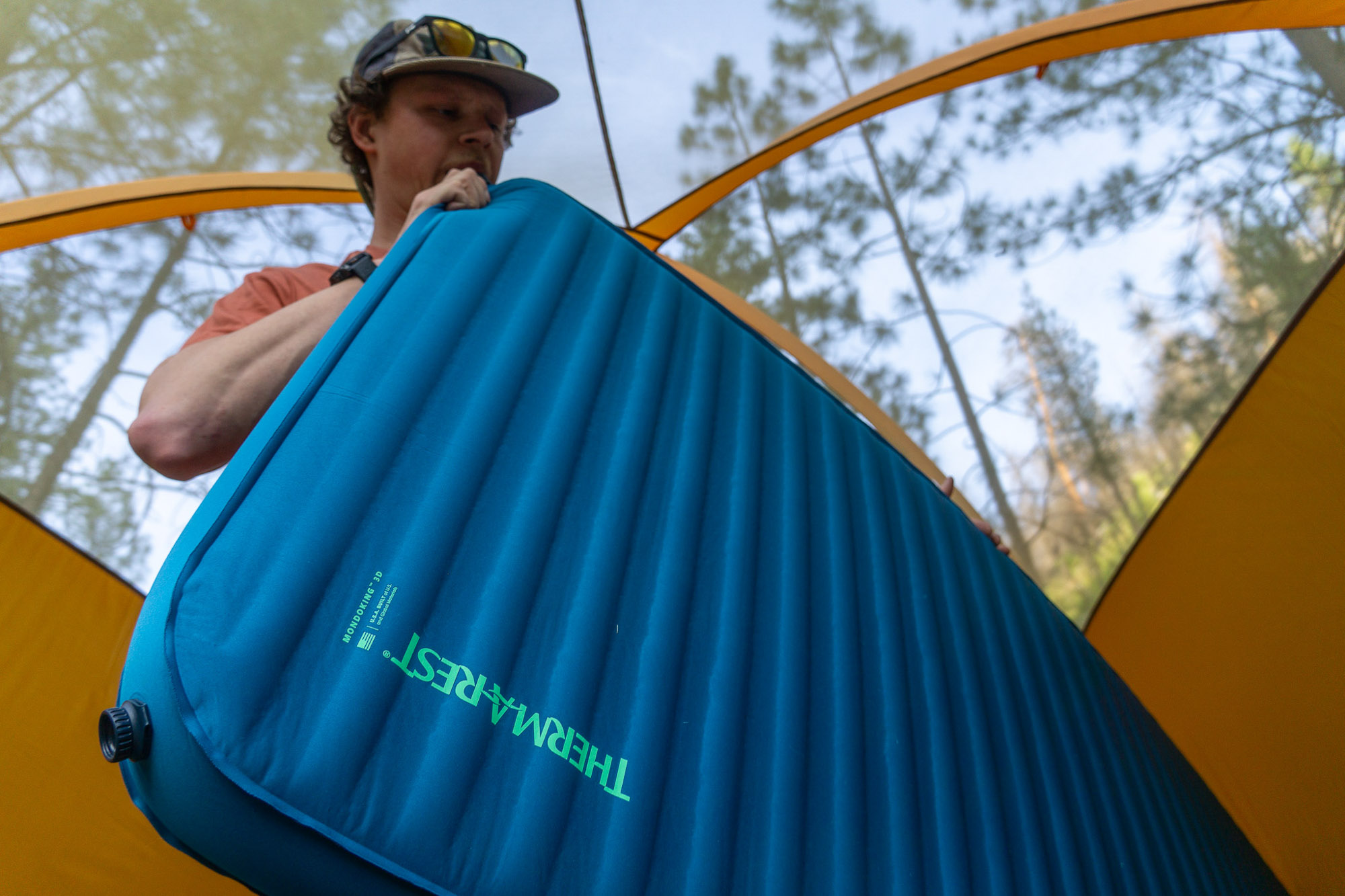Camp cooking can be pretty intimidating for people like me who didn’t grow up doing a lot of backcountry camping.
I come from an outdoorsy family — just not after sundown. For me, camping meant a night in the backyard, with breakfast waiting for me inside in the morning. It did not entail living the wilderness for days at a time.
So as a 32-year-old outdoorsy adult, I had never actually cooked on a camp stove. Embarrassing, and not at all good for my scene cred in the outdoor community.
When my husband (also a non-camper) and I booked a 4-day camping trip to recon a trail-running loop at a campsite, I knew we’d finally have to figure out the whole camp cooking situation once and for all.
I don’t know exactly what about it intimidated me: Campfires don’t freak me out, but the tiny propane tanks and scary-looking tiny stoves just seemed like they were reserved for serious campers and hikers. I’m just a trail runner.
But we made it happen. And we learned a lot on that first trip! If you’re debating making the plunge into camp cooking, but the lists of best stoves and gear you need seem intimidating, here’s a simple rundown of what you need to know.
Get the Gear
When you’re looking to buy your first camp stove, don’t wander aimlessly through REI. Do some brainstorming and then some research. We almost ended up with a few different stoves that would have been very expensive mistakes, because when trying to find the right setup for you, it’s kind of a Goldilocks situation. You’re looking for one that’s “just right.”
First, list all the ways you plan to use the stove and for how many people. Stick to what you’re currently doing, not the dream-world version of yourself.
For example, “my husband and I do a lot of car camping and often take cross-country trips where we want to make roadside coffee quickly in the morning, or cook full meals at a campsite” is a lot different than “I’m a solo backpacker planning an Appalachian Trail hike and want to keep my kit as light as possible.” Be realistic (and proud).
What You Need
You’ll usually end up needing some combination of this kit for camp cooking:
- Stove
- Lighter
- Propane
- 1 or 2 pots
- Spatula
- Optional: Lid and clamp for lid
- Optional: Windscreen
Best Camp Cooking Gear
Next, look for a setup that matches your needs. Need some ideas? We’ve got you covered. Check out our articles on the subject:
We ended up choosing the $150 Primus Essential Stove Set. It contains two pots, a lid that doubles as a frying pan, and a stove with built-in windscreen. Sure, it wasn’t the lightest or smallest option.
But for us — the car-camping, cross-country-driving couple — it made sense. And it can pack down for a hike; trying to cook for two big eaters on the trail meant we’d need a bigger pot no matter what.
One surprise to me was just how cheap a basic stove with no bells and whistles can be. You can kit yourself out for under $40. Or at least, it’s that cheap until you start adding in extras — especially lightweight pots and pans.
Expect to spend a minimum of $75 on a combination of gear, unless you find an amazing sale or are willing to sacrifice weight by using pots and pans from home. This brings me to another point.
Use What You Already Have
If this is your first foray into camp cooking, consider bringing the cook kit you have at home.
You’ll likely need to buy a camp stove regardless. Even if you have a campfire, cooking on a wood fire will char your pots and pans. An inexpensive stove is worth the investment.
But beyond that, pots, pans, and utensils from your kitchen will work just fine in the wilderness. Just put them in a bin or reusable bag and load them in the car. Sure, they weigh a lot more than camp-specific kits, but they will work just as well at a campsite as they do in your home kitchen.
And if you have a cast-iron pan, bring it! Its heavy metal distributes heat well and cooks food more evenly in cool weather. And you can cook everything from brats and burgers to potatoes and eggs on it.
You can even bring plates, forks, spoons, and spatulas from home. Just wash them in the field a little and then give them a good washing when you get back. If you’re worried about glassware breaking, pick up a few recycled paper plates to eat off of.
If you get paper (not plastic or styrofoam), the used paper plates will even make a good firestarter for the next morning if not too saturated.
Food Choices
I love a good backpacker’s dehydrated meal. But for this trip, I wanted to stick to a budget and keep things relatively healthy.
Because we were camping for a few days with no weight restrictions — just restrictions on keeping food cold — we had more options than a thru-hiker would have. This meant coming up with travel-friendly meals that were shelf-stable, nutritionally dense, and tasty.
We hiked and ran 20-plus miles every day, so we needed to come back to food we wanted to eat. Here are essentials I found that turned an otherwise dreary camp meal into something to look forward to.
My Camp Food Essentials
- Spice kit: Coghlan’s Multi-Grill Spice and Herb Assortment Shaker — This cheap ($5!) spice wheel is perfect for car camping or longer trips. It’s amazing what a bit of seasoning can do for flavoring boring food.
- Instant coffee: Kuju Coffee Pocket PourOver (5-pack) — A good instant coffee equals a good start to the day without the muss and fuss of a press.
- Pouch of pinto beans: Green Valley Organics Pinto Beans (12-pack) — I love precooked beans for adding carbohydrates, fats, and proteins to a meal quickly with zero cleanup.
- Pouch of wild salmon: Wild Planet Wild Sockeye Salmon (12-pack) — Again, for easy dinner options, a pouch of salmon is just as easy as dehydrated meals. And although it weighs a little bit more, I think it’s worth it for someone not doing a thru-hike who can afford to carry more weight.
- Pouch of olive oil: Organic Extra Virgin Olive Oil (20-pack) — Pouches are a lifesaver for avoiding spills!
- Dehydrated vegetables: If I’m not backcountry camping and carrying your gear, I love being able to add in vegetables to meals. And dehydrated veggies provide quick, easy options! A stirfry with salmon and some freeze-dried broccoli, a pinto bean stew with mixed vegetable medley, or beets snuck into your rice bowl can make a meal much more nutritious.
How to Cook on a Camp Stove
Cooking on a camp stove is different than cooking at home. You’ll learn some lessons the hard way, but these tips should help sidestep some common camp cooking pitfalls.
Oil Your Pan
Oil up your pan more than you do at home. Heat is hard to dial in on these stoves, so prepare to cook with high heat by having plenty of oil in your pan when cooking things that will stick, like eggs. Otherwise, plan to spend a lot of time stirring.
And for most dishes, you can even add a bit of water to the bottom of the pot — rice, beans, and vegetables all benefit from a half-inch of water at the bottom.
Cook With 2 Pots If You Can
Have two pots? Designate one pot as a water pot and the other for cooking. That way, you aren’t burning bits of oatmeal to the bottom of the pot that’s going to house water for coffee.
Bigger Is Better
If you’re car camping, you can consider using your heavier pans from home. The thicker metal will disperse heat more evenly. So if weight isn’t an issue, it’s not a problem.
Don’t Let It Stick
To clean the pot, heat water in it as soon as you serve the food. Dried food is harder to remove than cement!
Get a Spatula
Use a silicone spatula. We quickly realized we were scraping our pot as we tried to use a normal fork to stir around our food.
Block the Wind
If you don’t get a stove with a windscreen, you can still use your packs or find a corner between rocks and trees to block the wind. Even a light gust can make a stove nearly impossible to keep on.
Don’t Feed the Animals
Don’t leave your clean pots and pans out in an area known for hungry wildlife.
We witnessed a curious raccoon actually unzipping a tent after upending a table full of drying pots and pans at a neighboring campsite. When we yelled at it, it just looked at us like we were the rude ones before slowly meandering away.
So what are you waiting for? Don’t fear camp cooking anymore. Gear up, get out, and give it a try!



